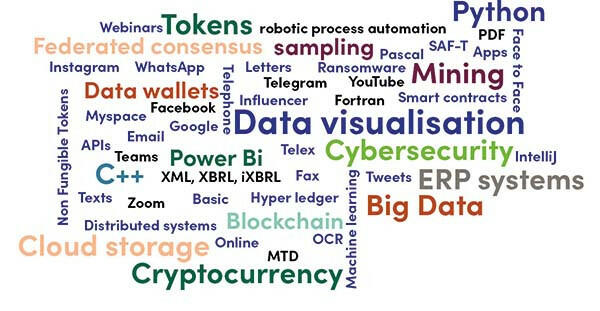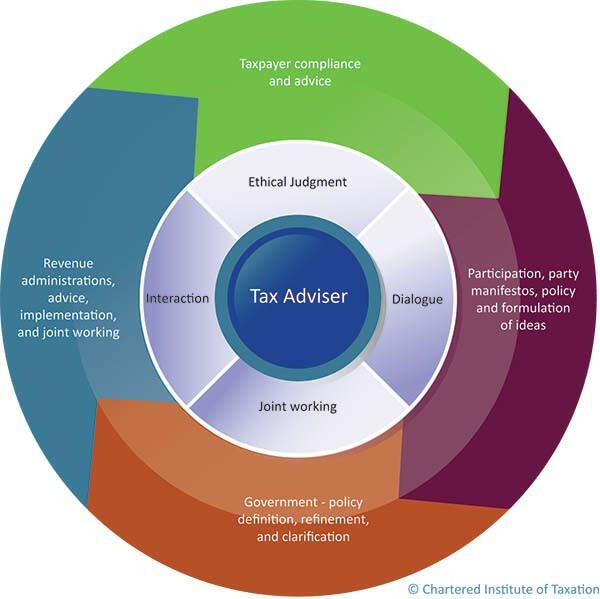Diploma In Tax Technology: Handling technology in taxation
Ian Hayes explains why CIOT is launching a new tax technology qualification.

Are there any terms in the word cloud above that you do not recognise? If you know and understand the significance of all of them, you are probably keeping pace with mainstream technological developments – and would probably not consider someone talking to you using these words as communicating in a different language. Some of the words are legacy and reflect a more sedate profession. Others reflect what has appeared and disappeared over the past two decades.
Against this background of change in tax and expenditure, changes to the administration of tax have been made and are being set. The need to preserve legacy systems at the same time as new digital systems are being devised, constructed and implemented has resulted in redundancy, reskilling, recruitment and continuous education for the administration. It still does.
Tax advisers are beginning to go through the very same process and problems from a compliance and advisory standpoint. As they do so, they must continue to understand and meet the needs of their clients. Education in tax technology will be one of the tools available to them, ready and able to assist.
What does this mean for a tax adviser who needs to understand the digital impact on taxation? What do they need to know? Can reliance be placed on an expert to advise and assist? How can the value and efficacy of tax advice be checked?
Governments and revenue administrations have given much time and money to these issues and are firmly committed to a digital future. Their building work is well underway. Taxpayers are already expected to be conversant with much of the underlying technology. Legacy systems have had a relatively short shelf life. The same truth applies to tax advisers.
Those who do not comprehend and adapt to the changes that have happened are failing both themselves and their clients. They are unable to fulfil the basic line of client service – communication.
The role that tax advisers play is referred to as a ‘virtuous circle’. Essentially, tax advisers – both as themselves and through their professional organisations – have connections to academics, political parties, governments and revenue administrations. They are an essential part of the dialogue which creates, maintains and adapts a living tax system.

This virtuous circle worked with legacy systems and, with adaptation, will work as well, if not better, with digital systems. The difference between the two is that digital technology is at the heart of that circle, and, if you cannot participate in communications either for strategy, policy, administration, compliance or supportive litigation, your circle will no longer be virtuous and will fail.
For tax advisers, as for any professional facing the challenge of digitalisation, the ultimate and real question is – how do we change? There are several answers, all centred around an awareness of digital technology and an understanding of how it works, how it can be used and how those key professional principles and practices can be transposed and embedded within the digital world.
The solution to this challenge is education. The CIOT understands the significance of digital change, which is an important part of tax practice and as relevant as tax law. CIOT’s first response is the development and launch of the Diploma in Tax Technology. Register your interest to find out more and visit www.tax.org.uk/DITT for more information in advance of the launch of the new Diploma later this year.


